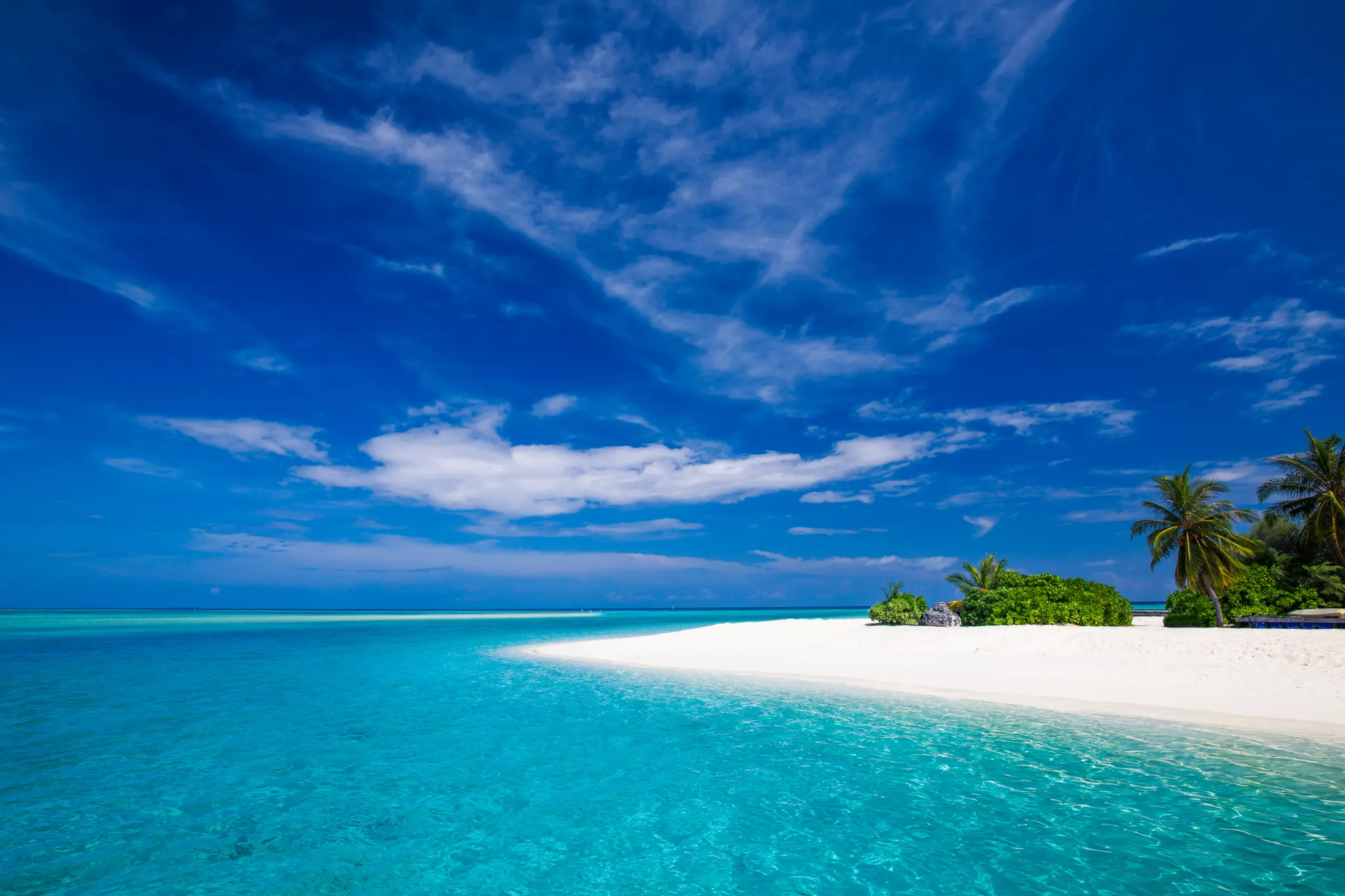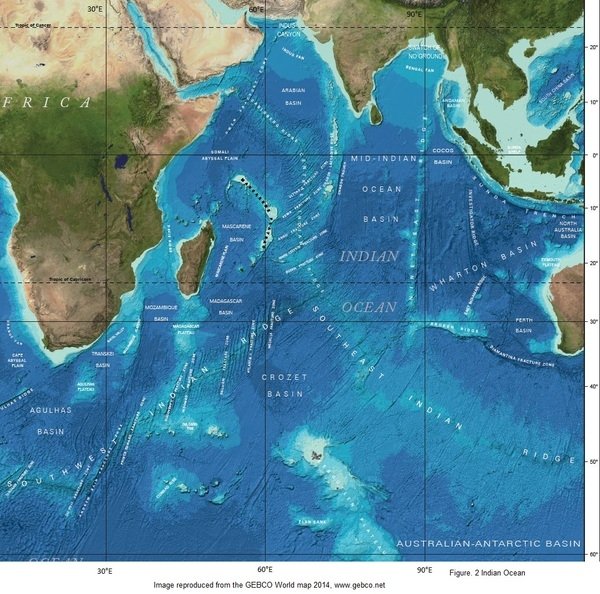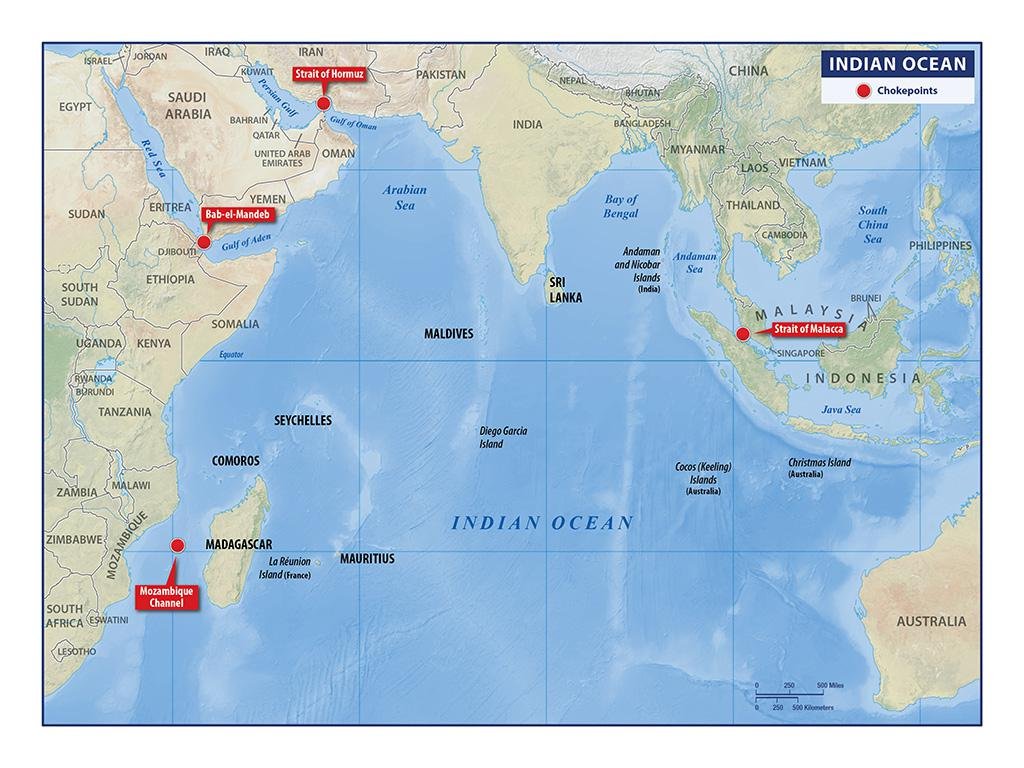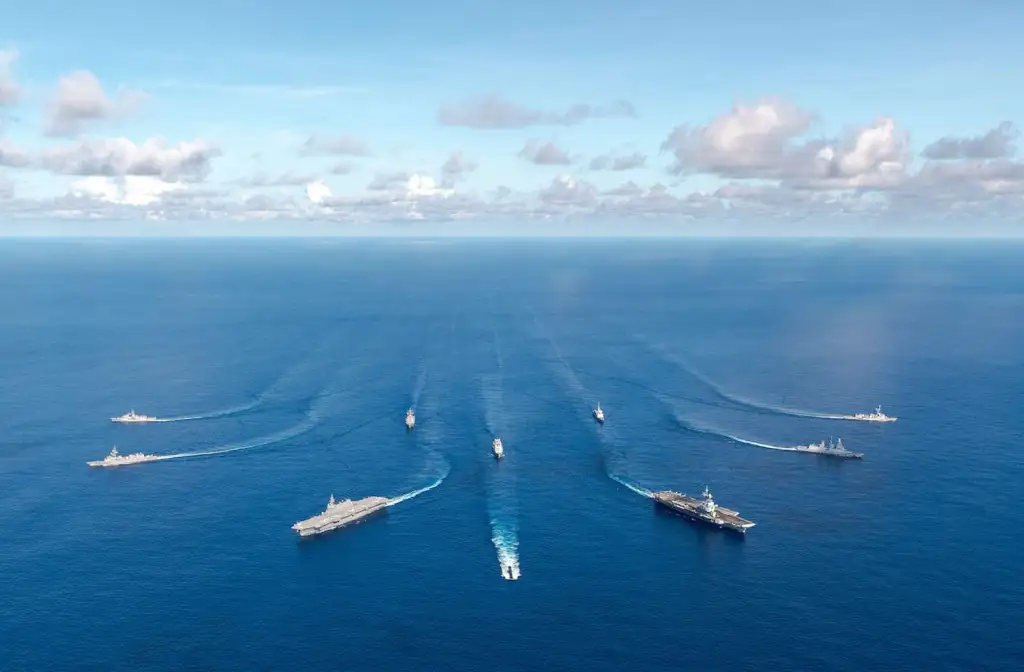The Indian Ocean, encompassing over 70 million square kilometers and bordered by Africa, the Middle East, South Asia, Southeast Asia, and Australia, holds immense strategic importance due to its geographical positioning, economic potential, and political significance. The ocean has been a vital conduit for international trade for centuries, serving as a bridge between East and West. Its importance has only grown in the contemporary era, influenced by global economic shifts, regional conflicts, and emerging security concerns. This essay will delve into various dimensions of the Indian Ocean’s strategic importance, examining its historical context, economic relevance, security dynamics, and geopolitical significance.
Historical Context of The Indian Ocean
Historically, the Indian Ocean has been a crossroads of commerce and culture. Ancient maritime routes facilitated trade between the civilizations of Mesopotamia, the Indus Valley, Egypt, and later the Greco-Roman world. Goods such as spices, silk, textiles, and precious stones were exchanged, making the region a melting pot of diverse cultures and influences. The monsoon winds played a crucial role in enabling maritime travel and trade, with traders timing their voyages to coincide with the seasonal wind patterns.
During the medieval period, the Indian Ocean trade network expanded significantly, connecting the Islamic world, India, Southeast Asia, and China. The rise of powerful maritime empires, such as the Cholas in South India and the Srivijaya in Southeast Asia, underscored the region’s importance. The arrival of European powers, particularly the Portuguese, Dutch, British, and French, marked a new era of colonization and competition, driven by the quest for control over lucrative trade routes and resources.
Economic Relevance The Indian Ocean
In the modern era, the Indian Ocean remains a critical artery for global trade. Approximately 80% of the world’s maritime oil trade passes through three key chokepoints in the region: the Strait of Hormuz, the Strait of Malacca, and the Bab el-Mandeb. These narrow passages are vital for the transportation of oil and gas from the Middle East to energy-hungry economies in Asia and beyond.
The Indian Ocean Rim (IOR) countries, comprising 22 states, have experienced significant economic growth, making the region a focal point for global economic activity. India, with its burgeoning economy, plays a pivotal role in the region, alongside other emerging markets such as Indonesia, Malaysia, and South Africa. The region’s economic dynamism is further bolstered by its vast natural resources, including oil, natural gas, minerals, and fisheries.
The Indian Ocean is also a crucial link in the global supply chain. Major shipping lanes traverse the ocean, connecting the major ports of Mumbai, Colombo, Singapore, and Perth. The importance of these lanes cannot be overstated, as they facilitate the movement of goods ranging from raw materials to finished products, underpinning global commerce.

Security Dynamics The Indian Ocean
The strategic importance of the Indian Ocean is underscored by its complex security dynamics. The region faces a multitude of security challenges, including piracy, maritime terrorism, and regional conflicts. These threats necessitate robust naval presence and cooperation among littoral states and major powers.
Piracy and Maritime in Terrorism The Indian Ocean
Piracy has been a persistent threat in the Indian Ocean, particularly off the coast of Somalia in the Gulf of Aden. Despite international efforts to combat piracy through naval patrols and escort missions, the threat remains, disrupting commercial shipping and posing risks to crew safety. Maritime terrorism is another concern, with groups such as Al-Shabaab in Somalia and other extremist organizations potentially targeting maritime infrastructure and vessels.
Regional Conflicts in The Indian Ocean
The Indian Ocean region is home to several flashpoints that could escalate into broader conflicts. The longstanding India-Pakistan rivalry, centered around the disputed region of Kashmir, has implications for maritime security in the Arabian Sea. The ongoing conflict in Yemen, with its strategic location near the Bab el-Mandeb, threatens to destabilize maritime routes and disrupt oil shipments.
Naval Presence and Military Bases The Indian Ocean Region
Major powers have established a significant naval presence in the Indian Ocean to safeguard their interests and ensure the free flow of commerce. The United States maintains a substantial military presence, with bases in Diego Garcia and Bahrain. China, with its Belt and Road Initiative (BRI), has expanded its naval footprint through the development of port facilities and bases, such as the one in Djibouti. India, recognizing the strategic importance of the region, has also enhanced its naval capabilities and established a network of partnerships with other littoral states.
Geopolitical Significance of The Indian Ocean
The Indian Ocean’s geopolitical significance is shaped by the interplay of regional and global powers, each seeking to assert influence and protect their interests. This dynamic has given rise to a complex web of alliances, rivalries, and strategic partnerships.
India-China Rivalry
The strategic rivalry between India and China is a defining feature of the Indian Ocean region. China’s growing presence, exemplified by its investments in port infrastructure and the development of the “String of Pearls” strategy, is perceived by India as a challenge to its sphere of influence. India’s response has been to bolster its naval capabilities, strengthen alliances with regional powers such as Japan and Australia, and enhance its engagement with the United States through initiatives like the Quad (Quadrilateral Security Dialogue).
United States Role in The Indian Ocean
The United States has long been a dominant naval power in the Indian Ocean, ensuring the security of critical sea lanes and projecting power in the region. The U.S. strategy in the Indian Ocean involves maintaining a balance of power, countering potential threats from state and non-state actors, and promoting freedom of navigation. The U.S. Navy’s Fifth Fleet, based in Bahrain, plays a crucial role in these efforts, conducting operations and exercises with regional partners.
Emerging Regional Powers
Several regional powers are also asserting their influence in the Indian Ocean. Countries like Australia and Japan have increased their engagement through naval deployments, humanitarian assistance, and infrastructure investments. The Association of Southeast Asian Nations (ASEAN) plays a significant role in fostering regional cooperation and addressing security challenges.
Blue Economy and Sustainable Development
The concept of the “blue economy” underscores the potential for sustainable development in the Indian Ocean region. The blue economy encompasses a wide range of economic activities, including fisheries, aquaculture, tourism, renewable energy, and seabed mining. Harnessing these resources sustainably is crucial for the littoral states’ economic prosperity and the ocean ecosystem’s overall health.
Fisheries and Aquaculture in The Indian Ocean
The Indian Ocean is one of the world’s most productive fishing grounds, providing livelihoods for millions of people in the region. Sustainable management of fish stocks is essential to prevent overfishing and ensure food security. Aquaculture, or the farming of fish and other aquatic organisms, offers an alternative to capture fisheries and has significant growth potential.
Renewable Energy in The Indian Ocean
The Indian Ocean has vast potential for renewable energy generation, particularly through offshore wind, wave, and tidal energy. Harnessing these resources could help meet the growing energy demands of the region’s rapidly developing economies while reducing reliance on fossil fuels and mitigating the impacts of climate change.
Seabed Mining in The Indian Ocean
The deep-sea floor of the Indian Ocean is rich in mineral resources, including polymetallic nodules, cobalt-rich crusts, and hydrothermal vents. These resources have the potential to drive economic growth, but their extraction poses significant environmental risks. Developing a regulatory framework for seabed mining that balances economic interests with environmental protection is a critical challenge for the region.

Environmental Challenges and Climate Change
The Indian Ocean region faces significant environmental challenges, exacerbated by climate change. Rising sea levels, ocean acidification, and changes in monsoon patterns threaten the livelihoods of coastal communities and the health of marine ecosystems.
Rising Sea Levels The Indian Ocean
Many countries in the Indian Ocean region are particularly vulnerable to rising sea levels, which can lead to coastal erosion, saltwater intrusion, and the displacement of populations. Small island states, such as the Maldives and Seychelles, are at the forefront of this challenge, with their very existence threatened by rising waters.
Ocean Acidification and Coral Reefs in The Indian Ocean
Ocean acidification, driven by increased carbon dioxide emissions, poses a significant threat to coral reefs in the Indian Ocean. Coral reefs are vital for marine biodiversity, coastal protection, and tourism. Efforts to mitigate carbon emissions and protect coral reefs through marine protected areas and restoration projects are crucial.
Changes in Monsoon Patterns in The Indian Ocean
Climate change is altering monsoon patterns in the Indian Ocean region, with profound impacts on agriculture, water resources, and weather-related disasters. Countries heavily reliant on monsoon rains for agriculture, such as India and Bangladesh, must adapt to changing precipitation patterns to ensure food security and sustainable development.
Regional Cooperation and Institutional Frameworks The Indian Ocean
Addressing the myriad challenges and opportunities in the Indian Ocean region requires robust regional cooperation and effective institutional frameworks. Several regional organizations and initiatives play a crucial role in fostering collaboration among littoral states.
Indian Ocean Rim Association (IORA)
The Indian Ocean Rim Association (IORA) is a key platform for regional cooperation, bringing together 22 member states and nine dialogue partners. IORA focuses on promoting sustainable development, economic cooperation, and maritime security. Key areas of cooperation include trade and investment, fisheries management, disaster risk reduction, and academic and scientific collaboration.
Indian Ocean Naval Symposium (IONS)
The Indian Ocean Naval Symposium (IONS) is a forum for naval cooperation among the littoral states of the Indian Ocean. Established in 2008, IONS aims to enhance maritime security through information sharing, joint exercises, and capacity-building initiatives. The symposium fosters dialogue and collaboration among the region’s navies, addressing common challenges such as piracy, maritime terrorism, and humanitarian assistance.
Regional Cooperation Agreement on Combating Piracy and Armed Robbery against Ships in Asia (ReCAAP)
Although primarily focused on Southeast Asia, the Regional Cooperation Agreement on Combating Piracy and Armed Robbery against Ships in Asia (ReCAAP) is relevant to the broader Indian Ocean region. ReCAAP facilitates information sharing, capacity building, and operational coordination to combat piracy and armed robbery at sea. The agreement includes member states from both within and outside the region, highlighting the importance of international collaboration in addressing maritime security threats.
Strategic Ports and Infrastructure Development
Strategic ports and infrastructure development are critical components of the Indian Ocean’s strategic importance. Ports serve as hubs for trade, logistics, and naval operations, while infrastructure projects can enhance connectivity and economic integration.

Major Ports in The Indian Ocean
Several major ports in the Indian Ocean region play pivotal roles in global trade. These include the ports of Mumbai and Chennai in India, Colombo in Sri Lanka, Durban in South Africa, and Port Klang in Malaysia. These ports handle significant volumes of container traffic, bulk cargo, and oil shipments, underscoring their importance in the global supply chain.
China’s Belt and Road Initiative (BRI) in The Indian Ocean
China’s Belt and Road Initiative (BRI) has significant implications for the Indian Ocean region. The BRI aims to enhance connectivity through the development of infrastructure projects, including ports, railways, and highways. Key projects in the Indian Ocean region include the Gwadar Port in Pakistan, the Hambantota Port in Sri Lanka, and the Kyaukpyu Port in Myanmar. While these projects offer economic opportunities, they also raise concerns about debt sustainability, environmental impacts, and geopolitical influence.
India’s Sagarmala Project
India’s Sagarmala Project is an ambitious initiative aimed at modernizing and developing the country’s port infrastructure and enhancing maritime connectivity. The project includes the development of new ports, modernization of existing ports, and the creation of coastal economic zones. The Sagarmala Project seeks to boost trade, reduce logistics costs, and promote sustainable development along India’s coastline.
Future Prospects and Challenges
Looking ahead, the strategic importance of the Indian Ocean is likely to grow, driven by evolving economic, security, and geopolitical dynamics. However, the region also faces significant challenges that must be addressed to harness its full potential.
Economic Growth and Integration
The continued economic growth of the Indian Ocean Rim countries presents opportunities for greater regional integration and cooperation. Enhancing trade and investment linkages, improving infrastructure connectivity, and promoting sustainable development are key priorities. Regional organizations such as IORA and initiatives like the BRI and Sagarmala Project can play crucial roles in facilitating economic integration.

Security Cooperation
Addressing security challenges in the Indian Ocean region requires robust cooperation among littoral states and major powers. Enhancing naval capabilities, conducting joint exercises, and fostering information sharing are essential for maintaining maritime security. Regional forums such as IONS and ReCAAP, as well as bilateral and multilateral partnerships, can contribute to building trust and addressing common threats.
Environmental Sustainability
Sustainable development in the Indian Ocean region hinges on addressing environmental challenges and mitigating the impacts of climate change. Efforts to protect marine ecosystems, manage fisheries sustainably, and develop renewable energy resources are critical. Regional cooperation and international support are essential to build resilience and promote environmental sustainability.
Geopolitical Stability
Maintaining geopolitical stability in the Indian Ocean region requires managing the complex interplay of regional and global powers. Balancing the interests of major powers, addressing regional conflicts, and promoting dialogue and cooperation are crucial. Diplomatic efforts and regional institutions can play vital roles in fostering stability and preventing the escalation of tensions.
The strategic importance of the Indian Ocean cannot be overstated. Its historical significance, economic potential, security dynamics, and geopolitical relevance make it a critical arena for global and regional powers. As the region continues to evolve, fostering cooperation, addressing challenges, and promoting sustainable development will be essential to harness its full potential. The Indian Ocean will remain a vital hub of global commerce, a theater of strategic competition, and a region of immense opportunities and challenges.
